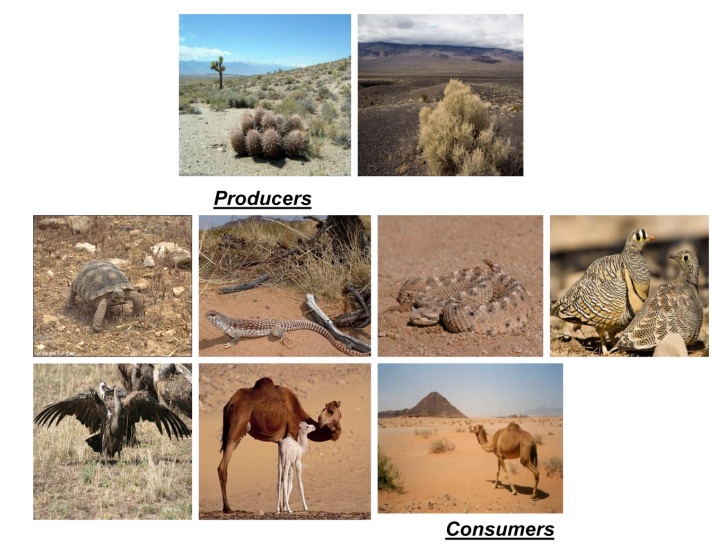Chapter: Environmental Science and Engineering
Structure and Functions of Desert Ecosystms

DESERT ECOSYSTEM
Introduction
v A desert
is a landscape or region that
receives almost no precipitation.
v Deserts are
defined as areas with an average annual precipitation of less than 250
millimeters per year.
v It
occupies about 17% of the earth’s surface.
v Deserts
are characterized by hot days & cold nights.
v The
deserts of the world are mainly located in the
South-
western United States, Mexico, North
America, Asia (Thar, Gobi,
Tibet) & west Asia.
v Deserts
are characterized by scanty flora & fauna.
v Soils of
deserts often have abundant nutrients but little or no organic matter.
Sturucture and Functions of Desert Ecosystms
I. Biotic components
1) Producer Organisms
v In a desert, producers are mainly
shrubs/bushes; some grasses & a few trees.
v Dominant
plant species include: Succulents (water - retaining plants adapted to arid
climate or soil conditions) & hardy grasses.
v Besides some lower plants such as lichens
& xerophytic mosses are also present.
2) Consumer Organisms
These include animals such as insects, reptiles
which are capable of living in xeric conditions
v Besides
some nocturnal rodents, birds & some mammalians like camel etc are also
found.
3) Decomposers
Due to
poor vegetation with very low amount of dead organic matter, decomposers are
poor in desert ecosystem.
v The
common decomposers are some bacteria & fungi, most of which are
thermophillic.
II. Abiotic components
Due to
high temperature & very low rainfall, the organic substances are poorly
present in the soil.

Related Topics